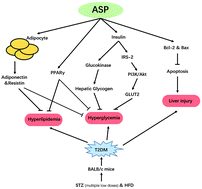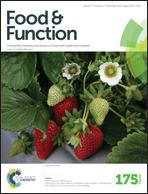Protective effects of Angelica sinensis polysaccharide against hyperglycemia and liver injury in multiple low-dose streptozotocin-induced type 2 diabetic BALB/c mice
Abstract
Angelica sinensis polysaccharide (ASP), one of the major active ingredients isolated from the roots of Angelica sinensis (Oliv.) Diels, possesses numerous bioactivities. The aim of the present study was to explore the mechanisms of ASP-mediated hypoglycemic effects in type 2 diabetic BALB/c mice induced by multiple low-dose streptozotocin (STZ) injections plus a long-term high-fat diet (HFD) feeding. The potential mechanism explicating the hepatoprotective effect was also considered. Specifically, serum and hepatic biochemical parameters were determined, as well as the key proteins involved in glucose metabolism and apoptosis. The multiple low-dose STZ injection plus HFD treatment induced significant hyperglycemia, hyperlipidemia and marked liver injury. Our results showed that ASP had beneficial effects in preventing hyperglycemia, stimulating insulin secretion, promoting hepatic glycogen synthesis, regulating adipokine release, reducing liver fat accumulation, and attenuating liver injury. Moreover, mechanistic studies illustrated that ASP could upregulate the expression of PPARγ and liver insulin signaling proteins, including IRS-2, PI3K, Akt, p-Akt and GLUT2, increase anti-apoptotic protein Bcl-2, decrease pro-apoptotic protein Bax expressions, and protect the mice against hepatic damage. These findings revealed the potential mechanisms of ASP-mediated therapeutic effects in diabetic mice. It suggested that ASP might be used in prescriptions or functional foods for the prevention or treatment of diabetes and liver diseases.


 Please wait while we load your content...
Please wait while we load your content...